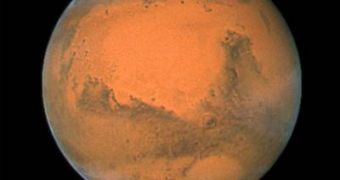We've actually come to know more about the 2007 WD 5 asteroid than about that other big hunk of rock that passed near Earth about two days ago. How is this even possible, all of a sudden Mars is more important to us than Earth? I mean, we only found out about 2007 TU24 two days before the asteroid made a flyby around Earth although it was discovered some three months back, while we've been talking about 2007 WD5's chance to collide with Mars for over a month now.
A rare event one might say, two different asteroids passing through the vicinity of two inner solar system planets less than one day apart, and mankind was there to witness it. During more than a month of observation, that asteroid 2007 WD5 has had a chance of plowing into the surface of the Red Planet as high as 3.6 percent. However, after January 9, as a result of new observations, the Near Earth Object program lowered the chance of a hit to close to zero.
Steve Chesley, astronomer at NASA Jet Propulsion Laboratory, says that such events usually take place once every 10 to 20 years, and the Red Planet suffers an impact from a relatively large asteroid once in a thousand years. NASA quickly mobilized its fleet of orbiters around Mars, in the hope that it would be able to capture the impact moment in case this would have happened. The energy released during such a process would have been enough to create a crater measuring at least 0.8 kilometers in diameter, mainly due to the planet's thin atmosphere which would permit an object to enter it with relative ease.
Although Mars is a much smaller planet than Earth, meaning it is harder for it to collide with an asteroid, the truth is that there are about five times more asteroids coming through the vicinity of the Red Planet than our own, most of them originating in the asteroid belt beyond its orbit extending all the way to planet Jupiter. It was a close call nonetheless, since 2007 WD5 approached Mars at a distance of only 6.5 Martian radii.
NASA has spend a great deal of time preparing its vehicles to observe a potential impact with Mars, however as the odds of a collision dropped to zero, none of them turned their cameras towards the rogue rock, because it was considered too hard to complete such task. On the other hand, Chasley argues that we haven't miss a great deal after all, it was most likely just another ordinary rock falling through empty space.

 14 DAY TRIAL //
14 DAY TRIAL //